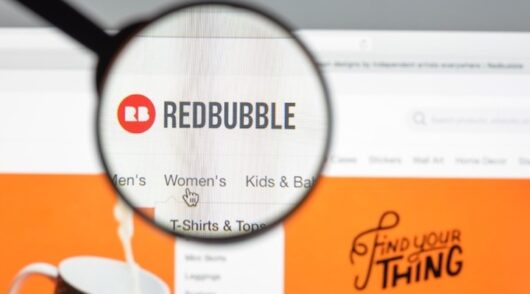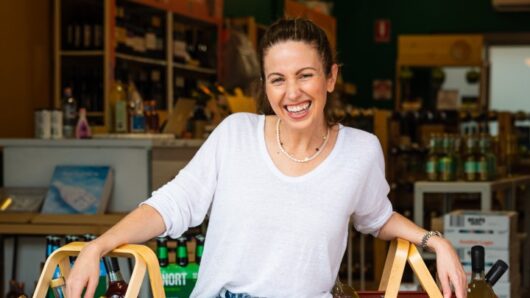 There was a time when the hottest deal on eBay was a set of used golf clubs, but if you searched ‘golf’ on the site today, you’d be more likely to find a brand new set, and the seller wouldn’t be your neighbour from down the road.
There was a time when the hottest deal on eBay was a set of used golf clubs, but if you searched ‘golf’ on the site today, you’d be more likely to find a brand new set, and the seller wouldn’t be your neighbour from down the road.
You’d instead be met by one of the thousands of established retail brands currently selling on the platform, from small traders to some of the largest retail companies in the country.
Indeed, those said to be most vulnerable to Amazon marketplace’s impending launch are no strangers to the concept, from Myer and Super Retail Group to Target and even Catch Group.
It lends well to the theories of those arguing that Amazon will be an opportunity for Australian traders rather than a threat, as brands such as Adairs, Temple & Webster, Booktopia, Beacon Lighting and PVH consider partnerships with the American giant.
All see marketplaces as a convenient supplementary earnings channel, which will tick along as they invest more heavily into their own e-commerce platforms in the coming years, boosting brand engagement with Aussies that prefer shopping online.
But the marketplace landscape is far from straightforward, and will likely become more complicated as players like Catch Group, Kogan and Amazon weigh in on the local industry.
Standing out
With an increasing number of retailers flooding into a growing number of channels, the question remains: how can a brand stand out among the crowd?
Approaches, unsurprisingly, differ. There are those, including Temple & Webster CEO Mark Coulter, who have opted for a hands-on and tailored approach to eBay, employing several channel specific team members to optimise listings and deal with customer service complaints.
Then there’s Booktopia, which also trades on Trade Me and Catch, and has taken a more centralised path, managing marketplaces through Booktopia’s sales director Tanya Johnson, who is responsible for all of the company’s channels, including its own site.
Booktopia’s managing director Tony Nash has weaved in marketplace customer service to existing customer service functions through API’s in collaboration with eBay, enabling his team to operate off a single platform to service inquiries.
According to Nash, Angus & Robertson, which Booktopia bought in 2015, has performed better on marketplaces than Booktopia, having managed to stand out from the crowd with its Australian brand heritage.
“On your own website, you aren’t competing with anyone else, but on a marketplace, you are competing against many others, so it’s a much more competitive environment,” he said.
Booktopia has worked closely with eBay to optimise its listings and Nash singled out the collaboration as a key takeaway for finding success on the increasing number of marketplace channels available to retailers.
Similarly, Adairs CEO Mark Ronan said Ebay had been happy and willing to collaborate on generating a good outcome for the bedding business, but it was ultimately up to retailers themselves to take the initiative in making the most out of listings.
While Adairs is considering a partnership with Amazon when it launches Down Under, Ronan said the increasing number of channels will make it more important for traders to carefully consider which ones align best with their brand, to avoid spreading organisational focus to thinly.
“You have to have a reason for being on the [platform], ask what customers are looking for and how that correlates with your business,” he tells IRW. “[Think about] which [marketplaces] you want to be on, and which correlate best with your brand and the piece around finding new customers, because your ultimate preference is that they shop through you directly.”
Marketplaces multiply
Both Ronan and Nash agree that marketplaces attract a different type of customer, and that sales cannibalisation is minimal. Nash even reckons marketplaces will have an increasingly net-positive impact on company-sourced e-commerce sales, as shoppers use Amazon and eBay as search functions for price comparison.
“When you go to a marketplace these days, [shoppers] say, ‘Hang on, maybe I should go to the Angus & Robertson website, I wonder what they’ve got it for – oh, I can deal directly with them’.”
Nash believes the marketplace model is mature in Australia, and that Amazon’s entry is more likely to divvy up the pie over growing it, a view that Coulter has also expressed, having signalled headwinds ahead for Ebay.
Ebay’s new Australian managing director, Tim Mackinnon, is backing his horse, saying retailers don’t trust Amazon, pointing to reports that the giant uses sales history from its partners to its own retail decisions down the line.
He’s not wrong – Coulter is of the belief that Amazon’s a double-edged sword and could within a few years turnaround and eat the breakfasts of established brands.
But if retailers are planning on trading through both, Ray Ridgeway, managing director for World First Australia (a company that assists Amazon and eBay sellers with fund transfers) says there are some key differences to get across.
“There are differences in the way eBay and Amazon operate internally, how they treat sellers, buyers and how logistics work,” he says.
“There are easy wins when moving across from one to the other, but…with Amazon, you may have more cut through as they’re offering fulfilment by Amazon, but in saying that, Ebay has a list of preferred suppliers they actually recommend.”
However, it is likely that the marketplaces themselves will have to be increasingly aggressive to vie for the attention of retailers, particularly as the market power Ebay has traditionally enjoyed as Australia’s most visited e-commerce site begins to tail out.
That could mean anything from a redefinition of trading terms to new partnerships that encompass things like promotional holidays, something that eBay embraced over this year’s winter stocktake.





